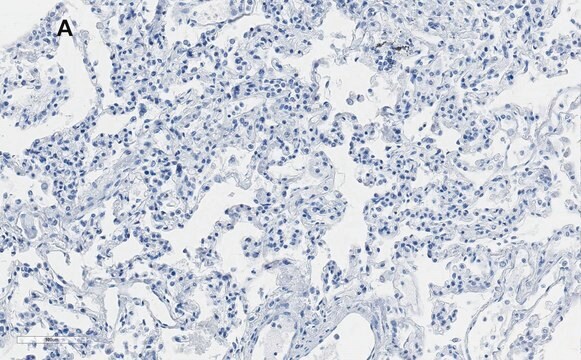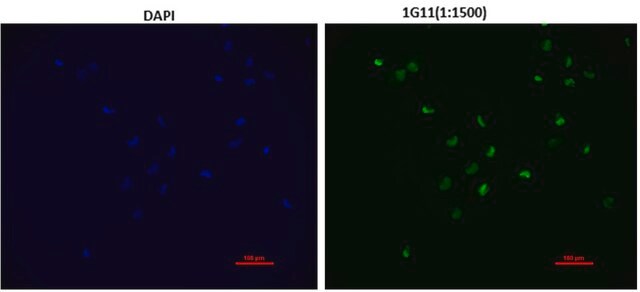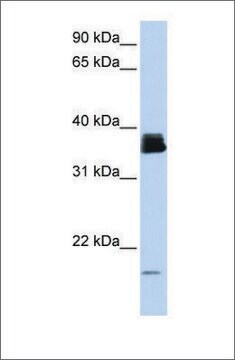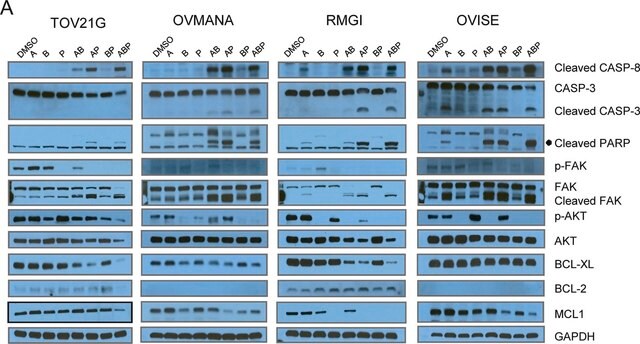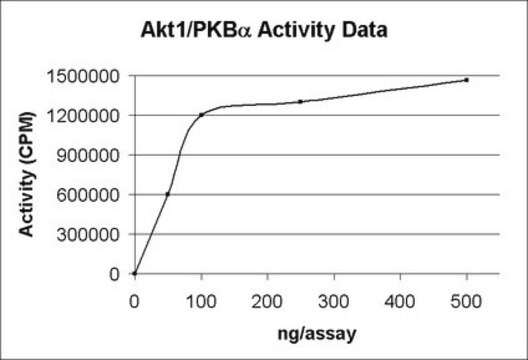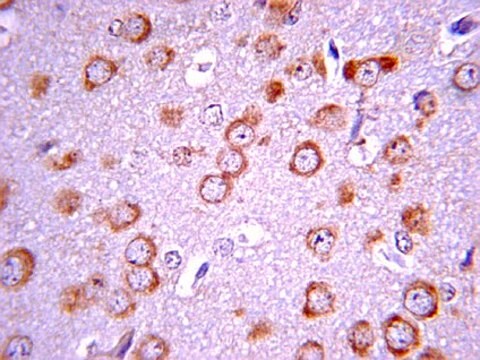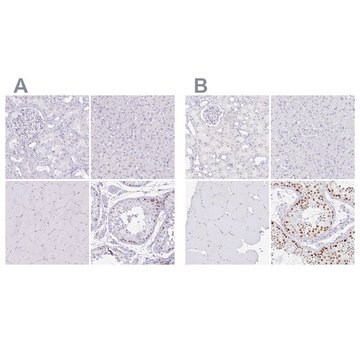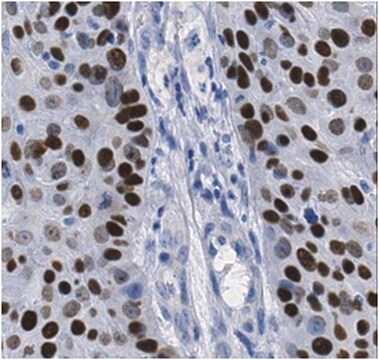MABF3063
Anti-Tax-1 Antibody, clone Lt-4
Synonym(s):
Protein PX, Protein Tax-1, Protein X-LOR, Trans-activating transcriptional regulatory protein of HTLV-1
About This Item
Recommended Products
biological source
mouse
Quality Level
antibody form
purified antibody
antibody product type
primary antibodies
clone
Lt-4, monoclonal
mol wt
calculated mol wt 39.47 kDa
observed mol wt ~60 kDa
purified by
using protein G
species reactivity
(T-cell leukemia virus 1 (HTLV-1))
packaging
antibody small pack of 100
technique(s)
ELISA: suitable
flow cytometry: suitable
immunocytochemistry: suitable
immunoprecipitation (IP): suitable
western blot: suitable
isotype
IgG3κ
epitope sequence
Internal
Protein ID accession no.
UniProt accession no.
storage temp.
2-8°C
Specificity
Immunogen
Application
Evaluated by Western Blotting with recombinant Human T-cell leukemia virus 1 Protein Tax-1.
Western Blotting Analysis: A 1:500 dilution of this antibody detected recombinant Human T-cell leukemia virus 1 Protein Tax-1.
Tested Applications
Flow Cytometry Analysis: A representative lot detected Protein Tax-1 in Flow Cytometry applications (Peres, C., et al. (2019). J Virol Methods. 274:113728).
ELISA: A representative lot detected Protein Tax-1 in ELISA applications (Lee, B., et al. (1989). Tohoku J Exp Med. 157(1):1-11).
Immunoprecipitation Analysis: A representative lot immunoprecipitated Protein Tax-1 in Immunoprecipitation applications (Lee, B., et al. (1989). Tohoku J Exp Med. 157(1):1-11).
Western Blotting Analysis: A representative lot detected Protein Tax-1in Western Blotting applications (Lee, B., et al. (1989). Tohoku J Exp Med. 157(1):1-11; Tanaka, Y., et al. (1991). Int J Cancer. 48(4):623-30).
Immunocytochemistry Analysis: A representative lot detected Protein Tax-1 in Immunocytochemistry applications (Lee, B., et al. (1989). Tohoku J Exp Med. 157(1):1-11).
Note: Actual optimal working dilutions must be determined by end user as specimens, and experimental conditions may vary with the end user.
Target description
Physical form
Reconstitution
Storage and Stability
Other Notes
Disclaimer
Not finding the right product?
Try our Product Selector Tool.
Certificates of Analysis (COA)
Search for Certificates of Analysis (COA) by entering the products Lot/Batch Number. Lot and Batch Numbers can be found on a product’s label following the words ‘Lot’ or ‘Batch’.
Already Own This Product?
Find documentation for the products that you have recently purchased in the Document Library.
Our team of scientists has experience in all areas of research including Life Science, Material Science, Chemical Synthesis, Chromatography, Analytical and many others.
Contact Technical Service